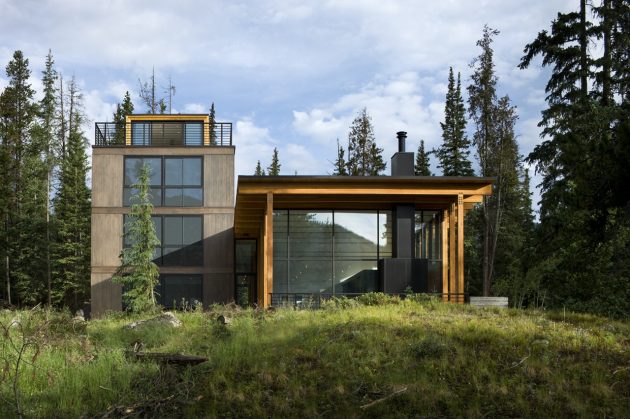When it comes to designing and building energy efficient homes, most people think about electricity, heating, and cooling. But it’s important to remember that water also plays a significant role in sustainability. By focusing on water conservation from the very beginning, you can build a home that’s truly energy efficient.
How to Design With Water Efficiency in Mind
While there are still entire regions of the world that don’t have clean drinking water readily available with the twist of a knob, American households are consuming an average of 300 gallons of fresh water per day. Here’s what you need to know:
- 70 percent of the average family’s water consumption occurs inside the home.
- The five appliances most responsible for water consumption are as follows: bath tub, toilet, washing machine, shower, and dishwasher.
- A full bath tub accounts for roughly 36 gallons of water, while a 10-minute shower goes through 20 gallons.
- The average person flushes a toilet six to eight times per day, consuming 18 to 24 gallons of water.
- Other sources of water consumption include household leaks, dripping faucets, running toilets, running an outdoor hose, and running a sprinkler system.
While some water consumption is inevitable, it’s clear that the average family is using too much water. By changing how we look at home design and construction, is it possible that we could build homes that prioritize water conservation?

1. Install Efficient Appliances
The number one piece of advice is to install efficient appliances. This might sound like an obvious tip, but it’s amazing how many homeowners select the cheapest option without looking at the lifetime costs of running an appliance.
“If you’re building a new home or remodeling your bathrooms, make sure to buy ‘low flush’ toilets, which use 1 to 2 gallons per flush instead of the usual 3 to 5 gallons,” explains The House Designers. “Replacing an 18-liter per flush toilet with an ultra-low volume (ULV) 6 liter flush model represents a 70% savings in water flushed and will cut indoor water use by about 30%.”
2. Be Selective With Sprinkler Systems
Sprinkler systems have changed a lot over the past quarter century. Systems installed prior to 2000 no longer meet nationally recognized water efficiency standards.
If you’re installing a sprinkler system on your property, make sure it’s “smart.” According to this blog post from Evergreen Sprinkler, a self-adjusting sprinkler that automatically adjusts to local weather conditions can save between 20 and 30 percent in water use.
3. Install a Hot Water Recirculator
How long do you let the shower run before you get in? And how much of that time is spent waiting on the water to heat up? If you want to avoid wasting so much water, you’ll want to install a hot water recirculator that gives you instant water. You’ll save hundreds of gallons of water per month.
4. Collect Rainwater
Rain falling from the sky is essentially free water – so why not use it? Anyone can set up a rain barrel to capture water, but since it picks up pollutants, this water should only be used outdoors. Rainwater harvesting systems, on the other hand, are even more functional.
“These are more expensive and complex to install, but if you’re building a new home in an arid area, it may be worth considering,” SEED Homes suggests. “The Texas Commission on Environmental Quality has a free, comprehensive guide to Harvesting, Storing, and Treating Rainwater for Domestic Indoor Use.”
5. Install Spray or Water Efficient Taps
In scenarios where hand washing is the primary use, there’s no point in having a standard tap. Installing a spray or water efficient tap instead can save gallons of water per day. Keep this in mind for downstairs bathrooms and other applications. It’s a small touch that can produce some pretty major returns down the road.
Water Conservation Starts With Strategic Planning
While it’s possible to practice water conservation in any home, it’s much easier if you’ve thought about efficiency in the design and construction stages. The next time you build a house or remodel an existing one, keep these suggestions in mind.














